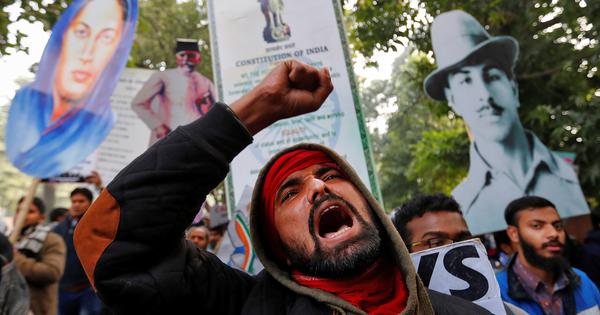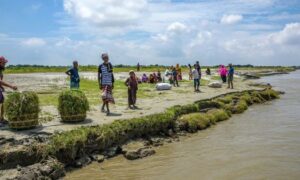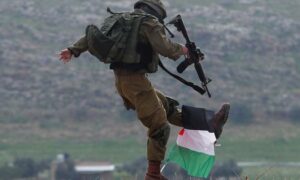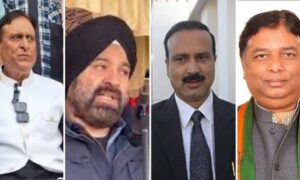
Citizenship – understood as formal legal status, as a conduit for rights, a means of shaping one’s social and cultural identities and as a moral claim about belonging – is a matter of intense debate in India and across the world today. As these debates rage on in India, there are stories of people impacted by legislative and administrative changes in Assam, Bihar, and across the country who are marked and described in terms of governance categories – as “doubtful voters” or “illegal immigrants” – that arrive in our inboxes and pop up as notifications on our screens – accounts of people struggling to get identity documents, receive food rations or register in schools, contending with impossible choices between finding and keeping jobs or remaining with kin, or facing criminal charges and deportation on account of a perceived foreignness in India.
As a historian of migration and citizenship, reading these stories, I see resonances with the accounts of people’s lives in legal and administrative records from the 1940s through the 1960s that I worked with for my book, Boats in a Storm: Law, Migration and Citizenship in Post-War Asia. There are no straight lines from the past to the present; instead, recalling these lesser-known stories that centre people’s lives is important as we navigate the kinds of arguments from history being made in the present moment.
The citizenship question
As the Second World War came to an end in 1945 and demands for political independence from British colonies in Asia grew louder, the question of national citizenship and belonging once again rose to the surface. Migrations for work from India to other parts of the world, and particularly to Burma, Ceylon, and Malaya (now, Myanmar, Sri Lanka, Malaysia and Singapore) posed a particular challenge for the citizenship question; people had been moving, or been forced to move between these places under indenture, contract, and in pursuance of employment opportunities, as traders and moneylenders, students, pilgrims, teachers, engineers and more.
While these movements between these places had been going on for centuries, there was a particular intensity from the mid-19th century onwards as plantations, mines, factories, mills and military installations were set up and people in India were seen as a source of cheap labour. People were often recruited under false promises and worked under difficult and demeaning conditions, while others played the role of brokers, financiers, and traders within these circuits. Agreements over immigration and citizenship within the British empire had been ongoing when the War broke out and the Japanese occupations of Burma and Malaya took place in 1942. These abandoned agreements featured provisions for how to account for time spent in the country to qualify for visas, permits, or citizenship (like discussions over cut-off dates today) among other details.
In the aftermath of the War, however, much had shifted: legislation was introduced in Burma, Malaya and Ceylon with stringent requirements, which were designed to keep people perceived as being “outsiders” or “foreigners” from accessing citizenship. While each of these places has its particular histories of rising ethno-nationalisms that centred indigeneity and authenticity at odds with the plural societies that they were (which I discuss in the book), these legislative developments all leveraged a rising resentment against “foreigners” and “outsiders”.
Everyone crossing or attempting to cross these new national borders was caught up in this storm of requests for documentation, surveillance and scrutiny in the light of fears over forgery and fraud, disenfranchisement through removal from voter rolls, and increasing costs for securing permits and certificates. As is the case today, not everyone was able to navigate these new, unexpected, and often unreasonable demands equally, waiting in line for days or pursuing costly litigation for years. Much depended on their class, caste, gender, and generational privileges within not one, but multiple locations: their perceived home and their chosen homes.
The debates over citizenship in India, at the same time, are by now well known, marked by the horrific events and displacements of the 1947 Partition. There were constitutional provisions to deal with the citizenship question for those individuals and families affected by it, while a stand-alone legislation for citizenship did not come into force until 1955. During this period, for those affected by the Partition, it began a period of intense scrutiny of paperwork – passports, permits, certificates and more – alongside forced displacement, deprivation of property and insufficient support from refugee resettlement schemes.
The lesser-known histories of this moment have to do with those caught between citizenship legislation in Burma, Ceylon, Malaya and elsewhere (all of whom had provisional or final citizenship legislation in place by 1947-48) and the doubts and confusion surrounding Indian citizenship, particularly for those who were not in direct proximity to the Partition. In cross-border legal disputes over taxation, immigration, preventive detention and deportation – many of which took place in Madras, Rangoon, Colombo and Singapore – people tried, with varying degrees of success and with the help of caste associations, trade unions, journalists, progressive lawyers and others – to narrate their personal and family histories of migration, hoping to align them with state-sanctioned political histories, and providing explanations, evidence, and witnesses for instances where their stories did not match.
In the end, these migration histories and the stories of people caught up in them became an afterthought. While diplomatic arrangements, including “repatriation” (sometimes to a “home” that people had never been to) were made between India and Burma/Myanmar and Ceylon/Sri Lanka to “settle” the question of belonging, in district offices, at ports of embarkation, and in law courts, people found that their stories were not legible, instead reinscribing the Partition as the historical context for the question of Indian citizenship. At stake were families, homes, land, possessions and above all, a displacement from the rhythms and patterns of migrant life and a sense of dignity.
Uncertain citizenship
The period between the 1940s and the 1960s, during which many of these developments took place, is often seen as a lull in the history of legislation on citizenship in India, especially ones recounted leading up to the Citizenship (Amendment) Act, 2019. These timelines accurately show how the Partition continues to cast a long shadow on the question of belonging in India. In these histories, the next noteworthy development is often seen to be the Assam Accord and its recognition in the form of Section 6A of the Citizenship Act, 1955, which reflected a political settlement between Assam’s political and student leaders and the central Indian government regarding illegal immigration from Bangladesh following its independence from Pakistan. Finally, the 2019 amendments to the 1955 Act reflect an attempt by the BJP-led government to offer a smoother path – a fast track – towards citizenship for non-Muslim minorities from Pakistan, Bangladesh and Afghanistan, once again mirroring attempts in the post-independence period to remedy the injustices of the Partition but instead deepening communal divides.
In the time lag between the constitutional provisions regarding citizenship in 1950 and the Act in 1955, those affected were not only those in direct proximity to the events of South Asia’s many partitions, nor was it restricted to the immediate aftermath of the events. Many who left India and lived and worked outside the country prior to independence were caught up in this period of uncertainty, not knowing which citizenship they ought to opt for, what the registration procedures were, and what the consequences would be if they had to eventually make their way back to India and claim Indian citizenship.
The formal end of the British Empire in Africa, particularly in Kenya and Uganda, was accompanied by the expulsion of long-term residents who had migrated from India, who then were forced to seek refuge in the United Kingdom and North America. The lack of clarity on these processes – cut-off dates, term limits, the proper sequence of events required to qualify as “Indian” – likely contributed to the involuntary termination of Indian citizenship in many cases.
Scholars of refugee regimes also point out that migrations and displacements within South Asia to India unrelated to the 1947 Partition or the 1971 Liberation War also continued through the 1980s and 1990s: the expulsions of Nepali-descended Bhutanese from the country and them subsequently seeking refuge in India, the breakout of civil war in Sri Lanka leading to Sri Lankan Tamils seeking refuge in India, Europe and North America, Tibetan refugees resettled in India as they fled the PRC regime, and most recently, Rohingya refugees in India fleeing Myanmar and Bangladesh.
India’s decision not to have a comprehensive refugee regime – which can also be traced to the decisions around Partition-induced displacements being managed as a sui generis category – had long-standing implications for how refugee-dom would be understood and experienced in the country. For refugees residing in the country, periodic visits to local authorities for registrations and renewals of permits, certificates, and permissions became reminders of their liminal legal status in the country. A new Immigration and Foreigners Act, 2025 consolidates and replaces legacy legislation on entry, exit, registration and movement of non-citizens in the country, and exempts some of these refugee communities from carrying a passport, a risky venture in these times when there is ever fluctuating hierarchy of identity documents. These histories too, are additive in nature, used to rework legislation as they are recalled.
Multiple nationalisms
The 1940s to the 1960s also witnessed the making and unmaking of multiple nationalisms in which history and history-writing was leveraged for different ends: the politics of the Partition and ensuing communalism in Punjab, Bengal, Assam, Kashmir and across the country, the rise and electoral triumph of the Dravidian parties in Tamil Nadu and in diasporic Tamil speaking communities in Ceylon, Burma, and Malaya, the language movements in Bengal, Madras, Bombay and elsewhere, to name only a few within India (not to mention the anti-colonial impulses of the Asian Relations Conference or the anti-Cold War impulse associated with the Non-Aligned Movement).
There are powerful and complicated histories of decolonisation and decolonial solidarity that one can narrate through these events and the people associated with them. However, in narrating the stories of people who crossed new borders and were suspected of holding on to old and suspect loyalties, we might begin to see the limits of these political projects and the promises they made.
These histories, highlighting how citizenship was shaped, experienced and challenged not only by national leaders or diplomats, responding to political exigencies but also by those who were caught up in the transition from empires to nation-states, and in the significant geopolitical shifts since, are not “forgotten”. Indeed, they are quite the opposite – they are remembered and recollected, memorialised and mourned by those who found themselves having to deal with a makeshift citizenship regime.
To cite but one example, a recent news story about the caste and labor struggles on Manjolai tea “estate” in Tamil Nadu was about the Singampatti zamindari’s debts leading to them leasing land to the Bombay Burmah Corporation, where Dalit families from Kerala, Tamil Nadu and Assam labored alongside malaiyaha Tamil families “repatriated” from Sri Lanka in 1960s after a diplomatic “solution” to the question of Indian and Sri Lankan citizenship. The workers had approached the Madras High Court multiple times to prevent closure, secure wages and housing and their dignity, but in vain. This is the unfinished business of decolonisation, one where challenges that began as legal or administrative limits on formal legal status have afterlives as caste, labour, and class struggles in another and continues to have an intergenerational impact through atrocities, displacement, landlessness or lack of documentation. Rather than label them as “forgotten” histories of citizenship, we might ask ourselves why they are forgotten – and by whom.
Kalyani Ramnath is the author of Boats in a Storm: Law, Migration and Citizenship in Post-War Asia, published by Westland.
📰 Crime Today News is proudly sponsored by DRYFRUIT & CO – A Brand by eFabby Global LLC
Design & Developed by Yes Mom Hosting






